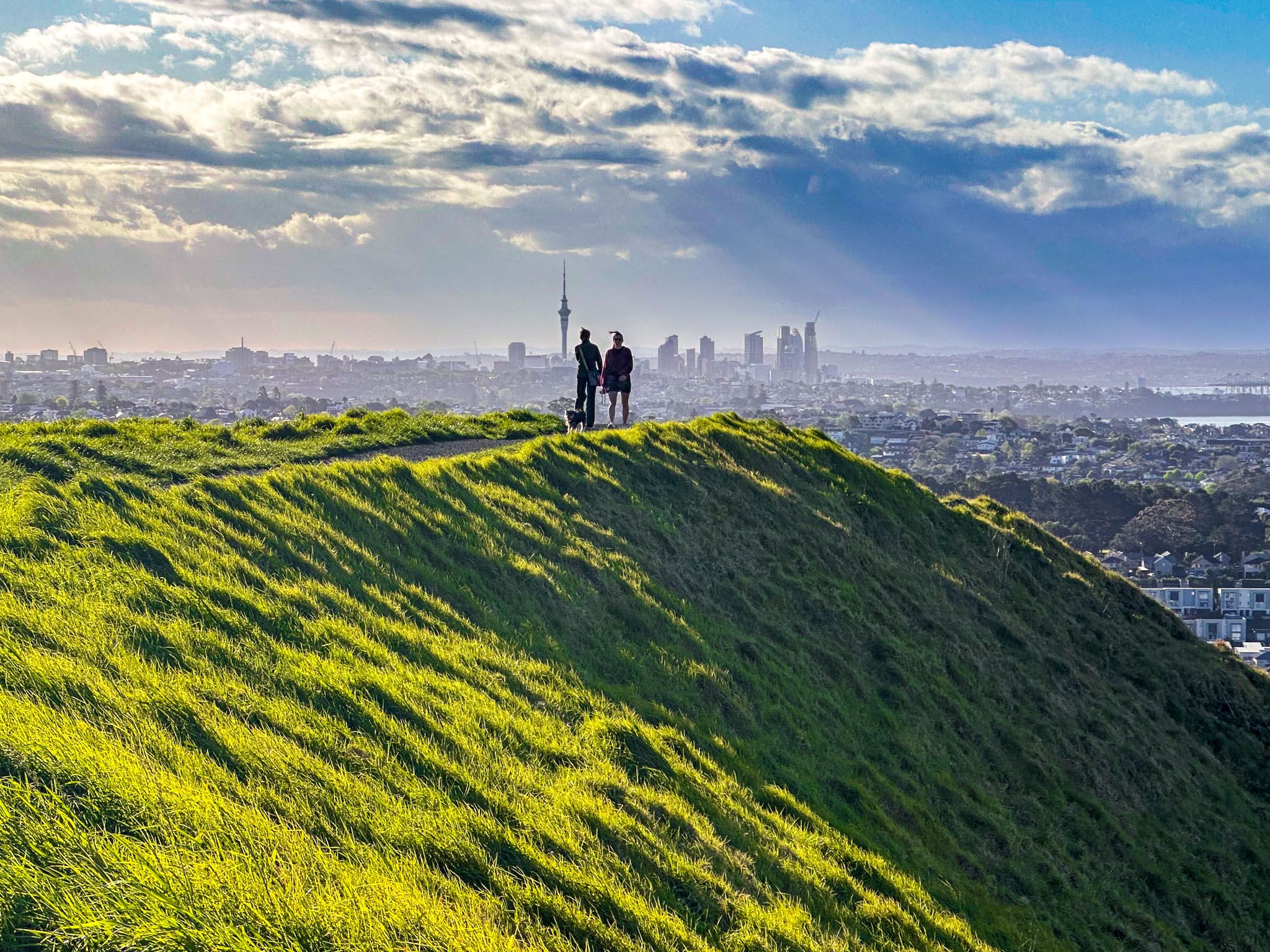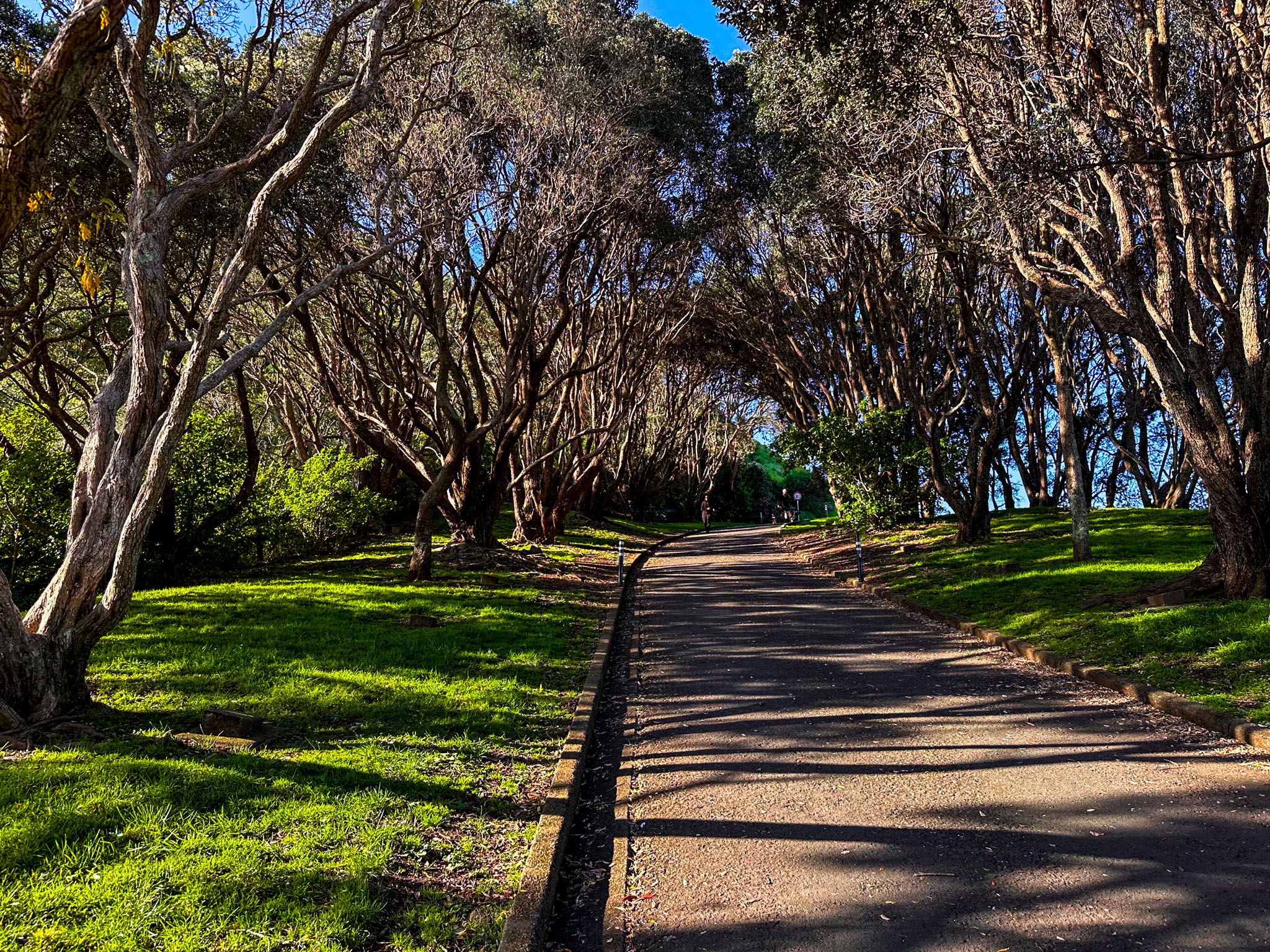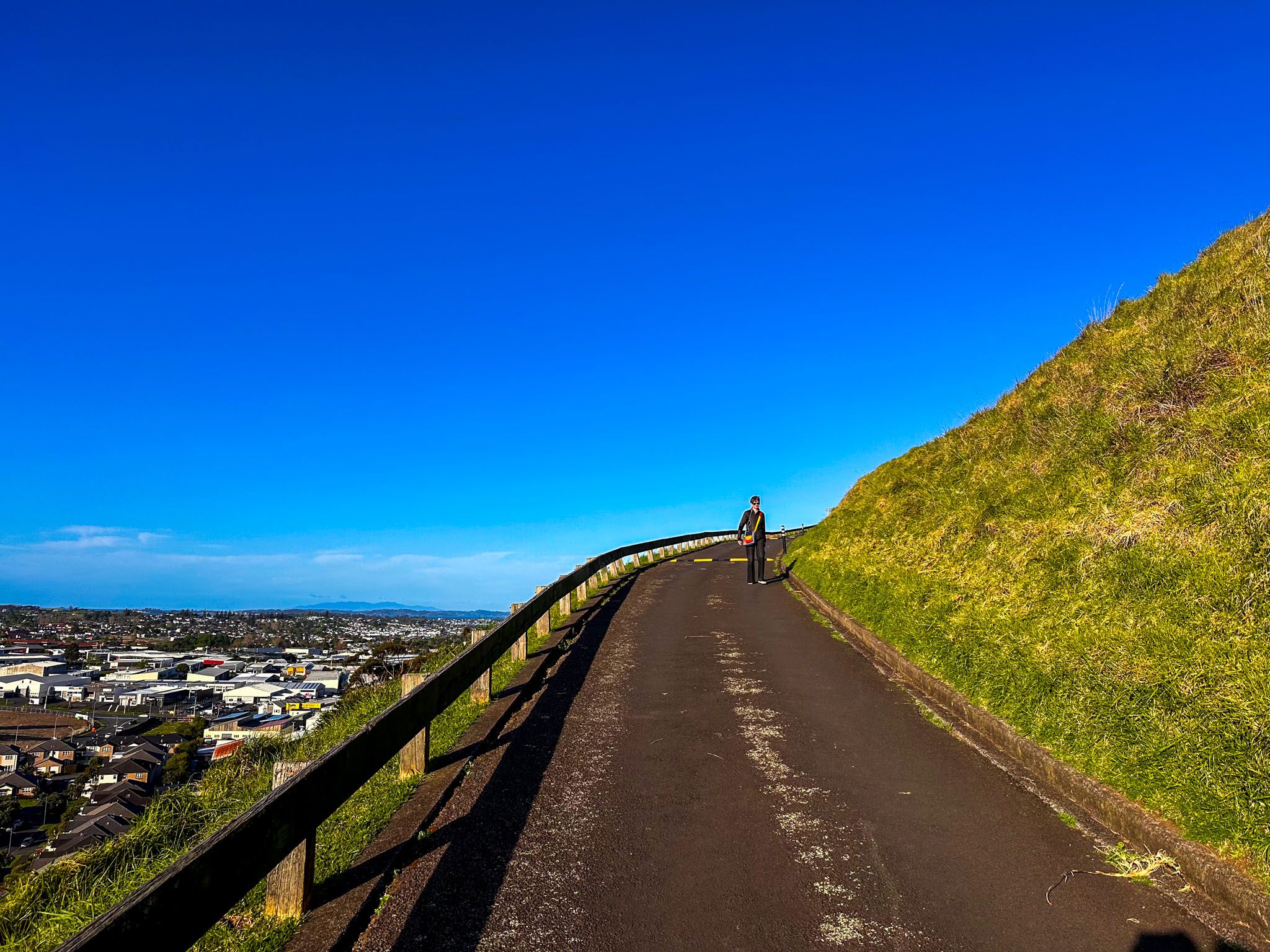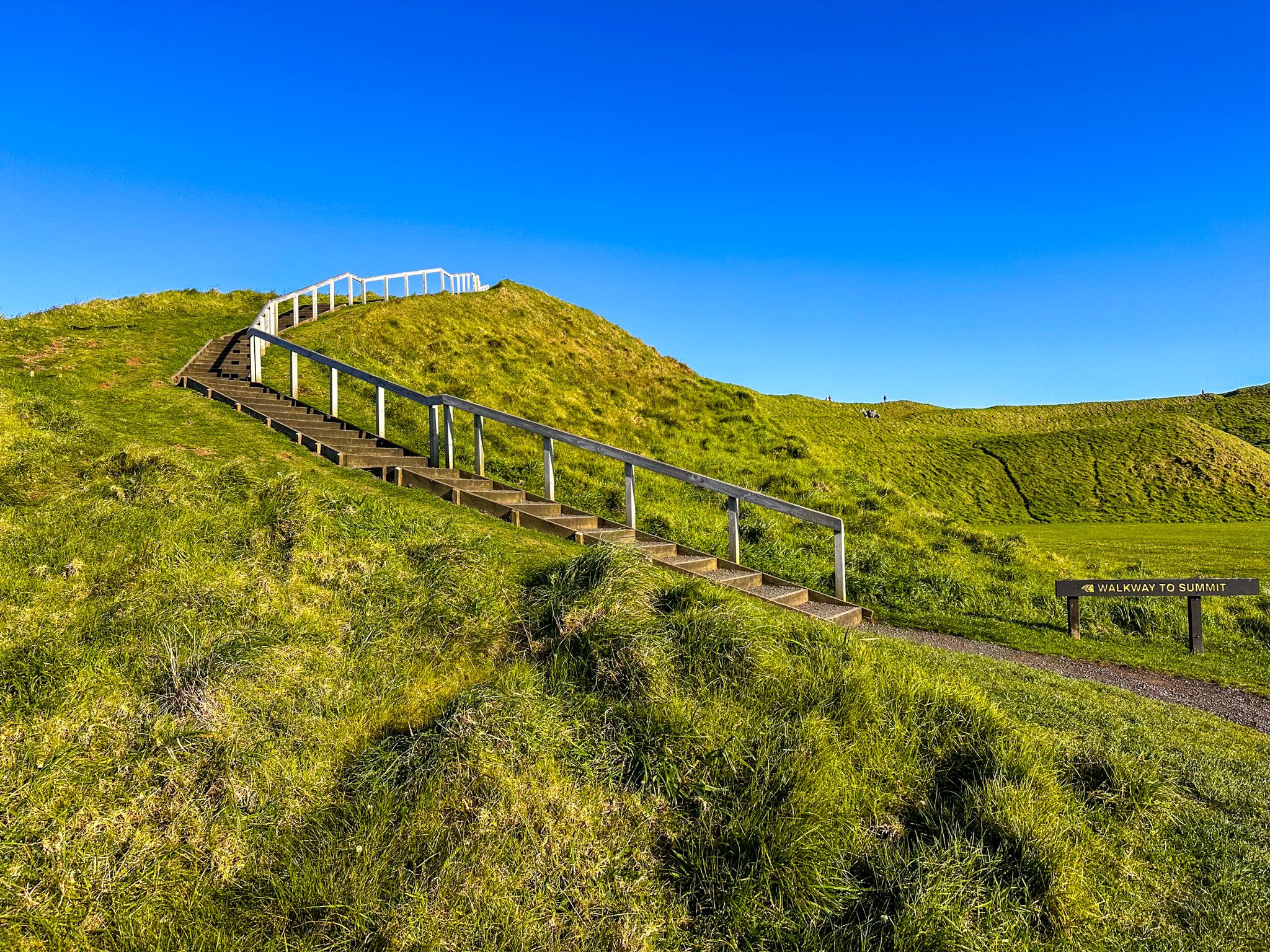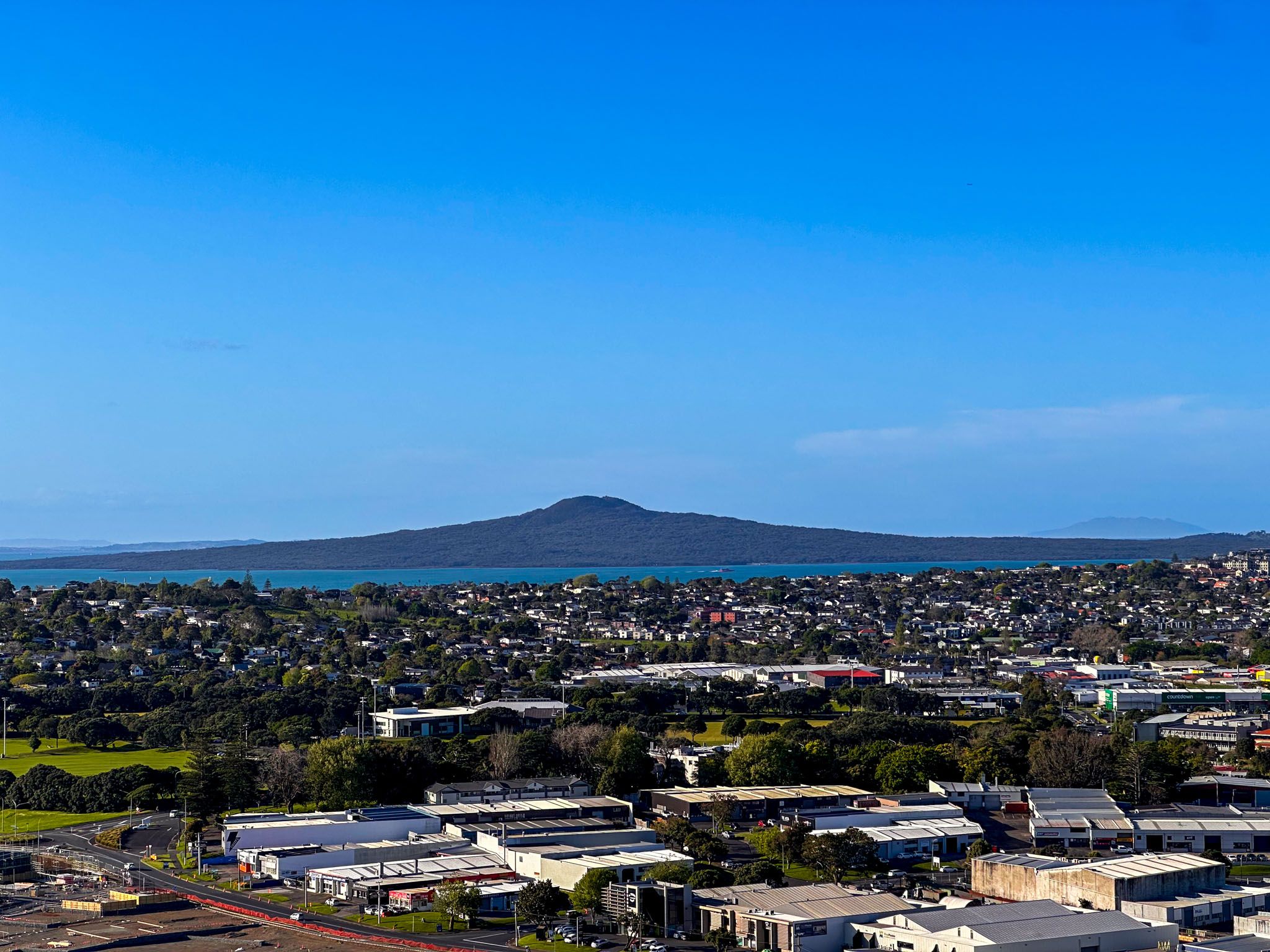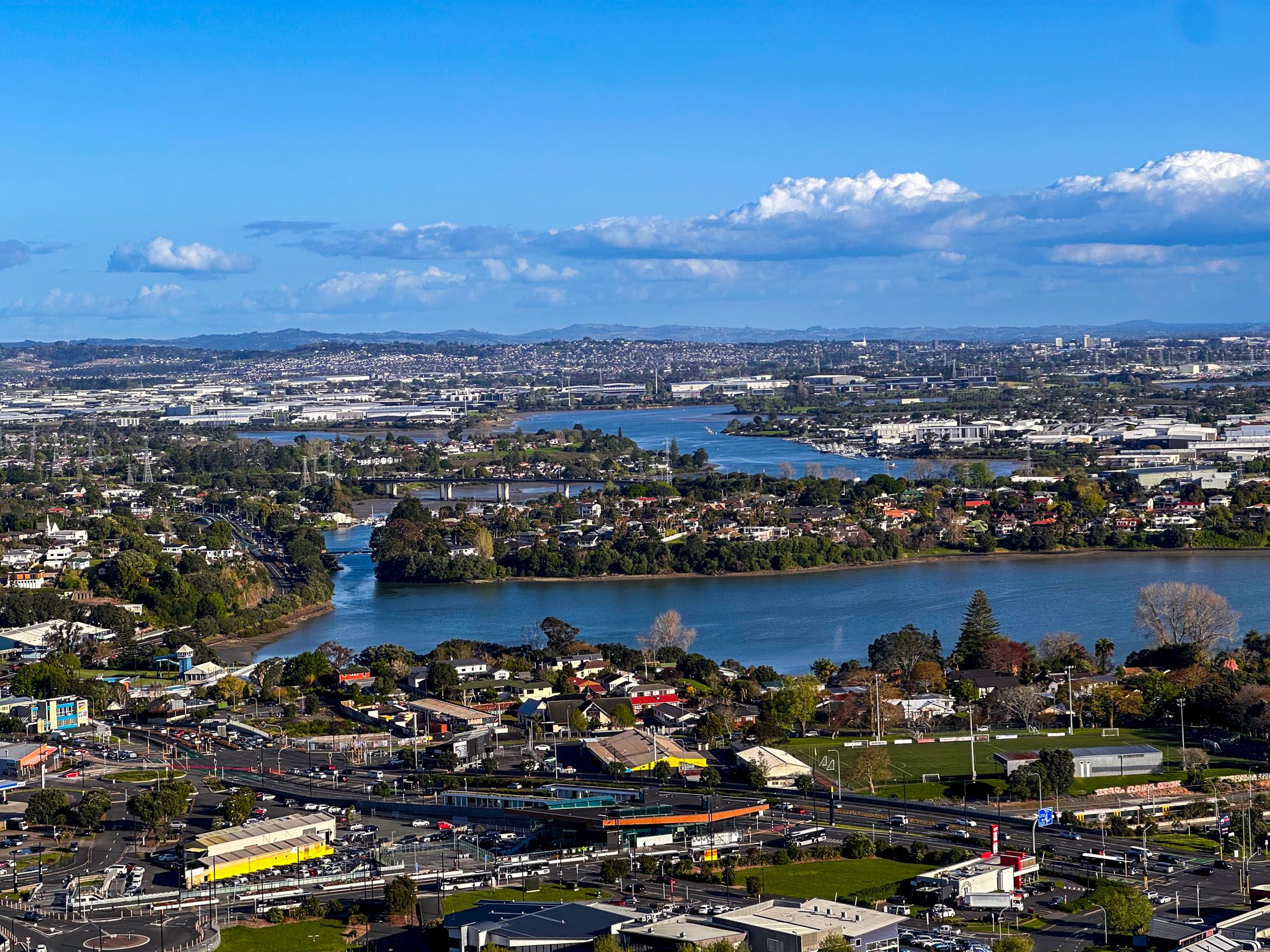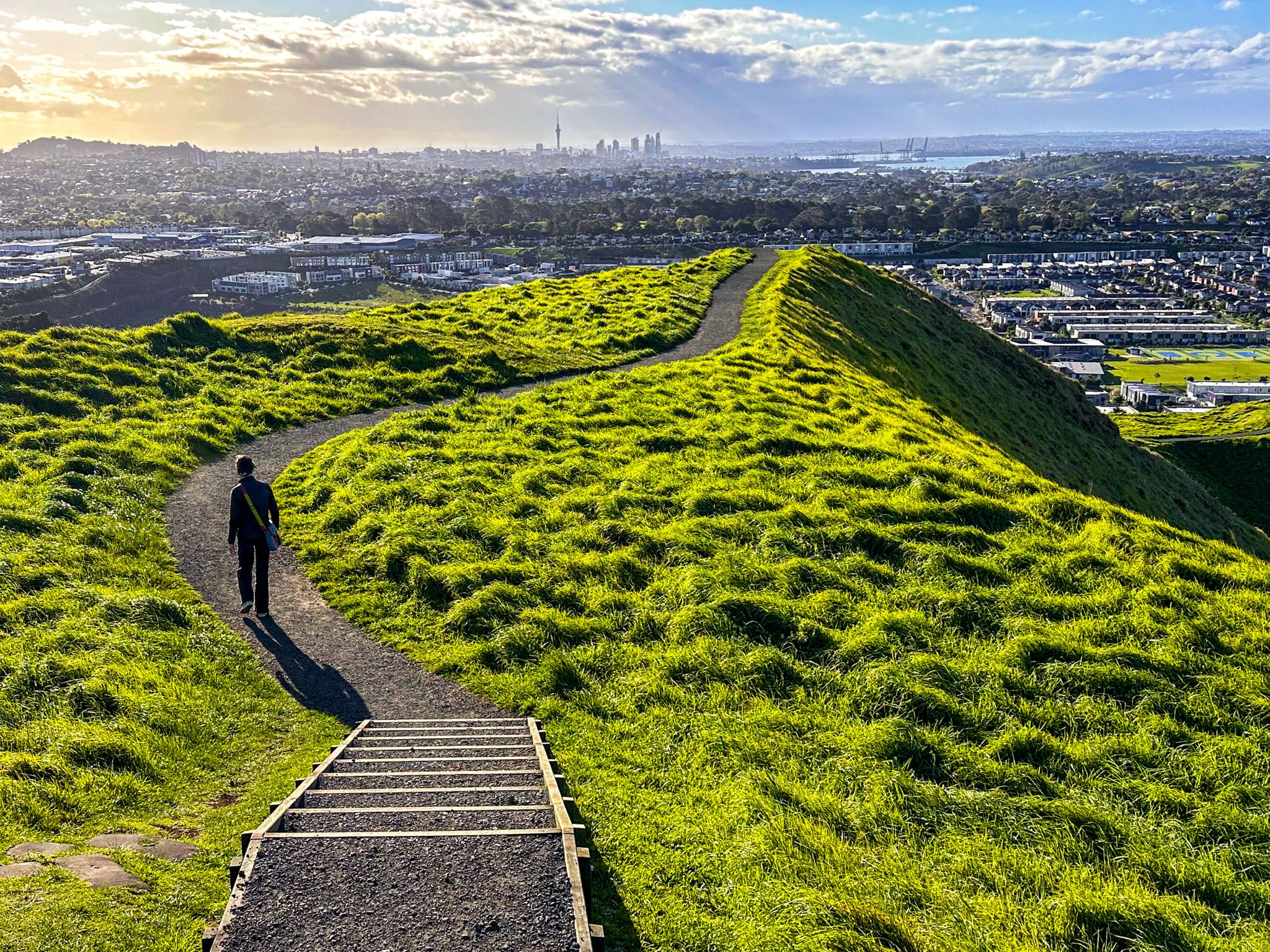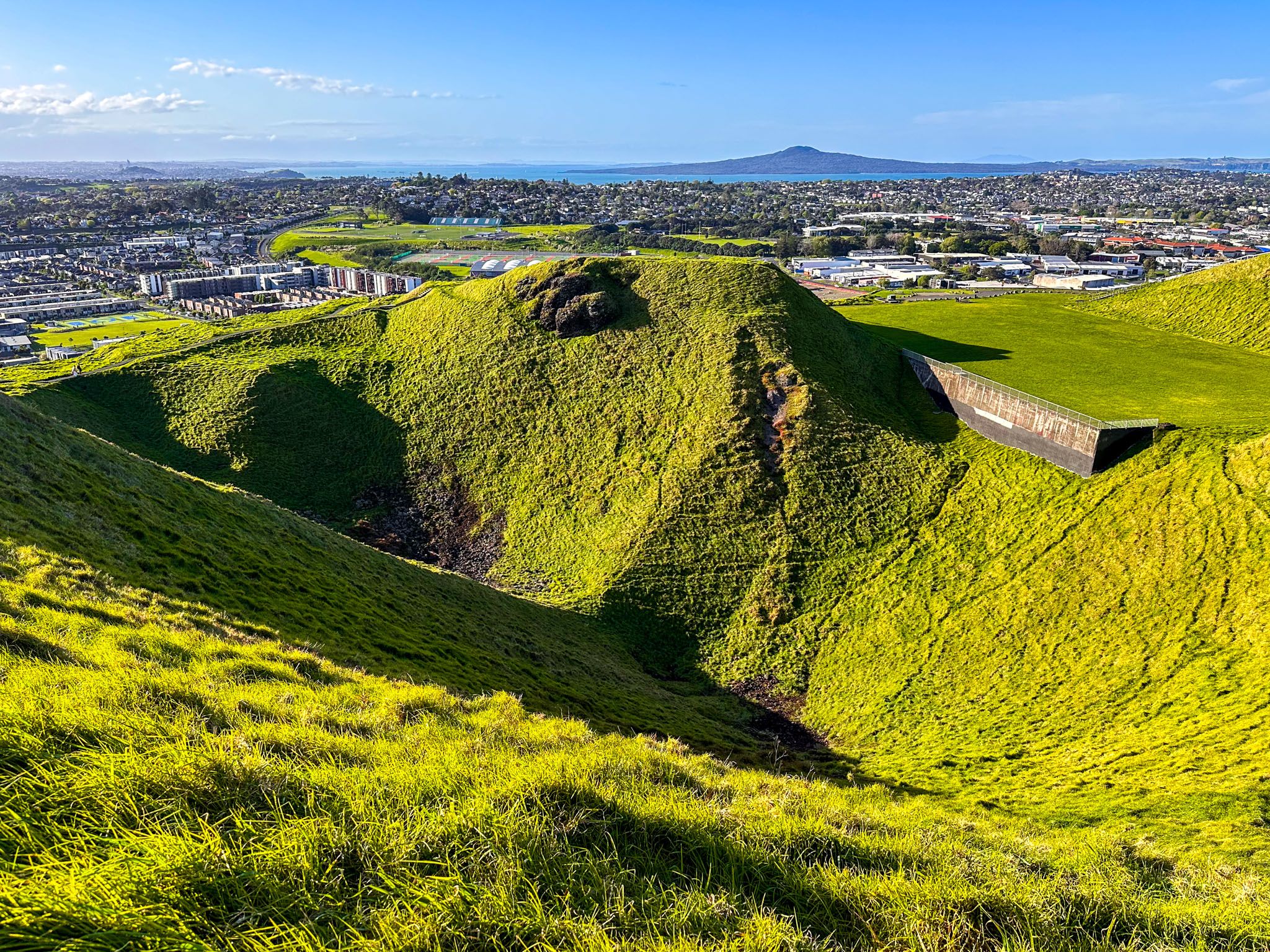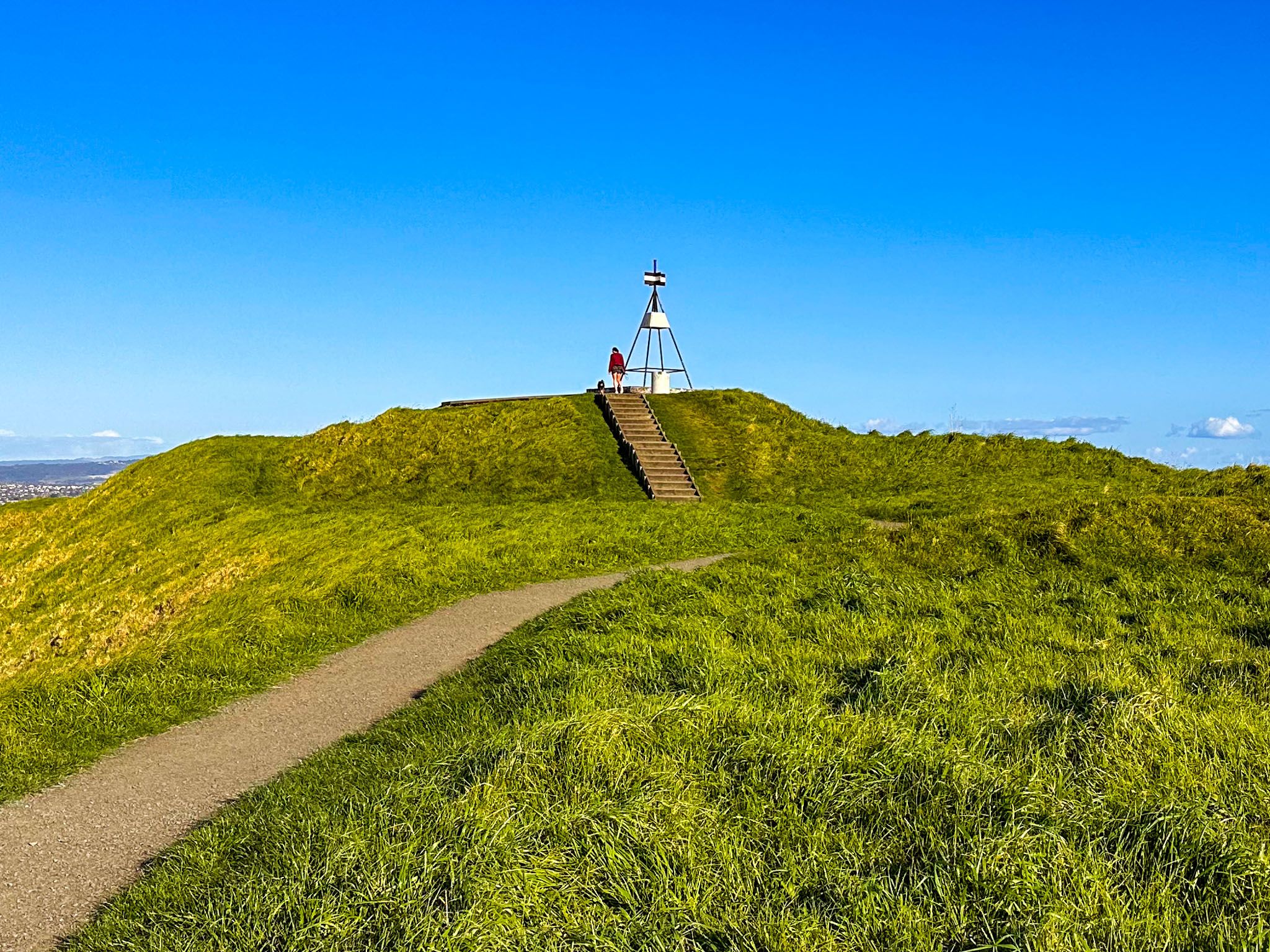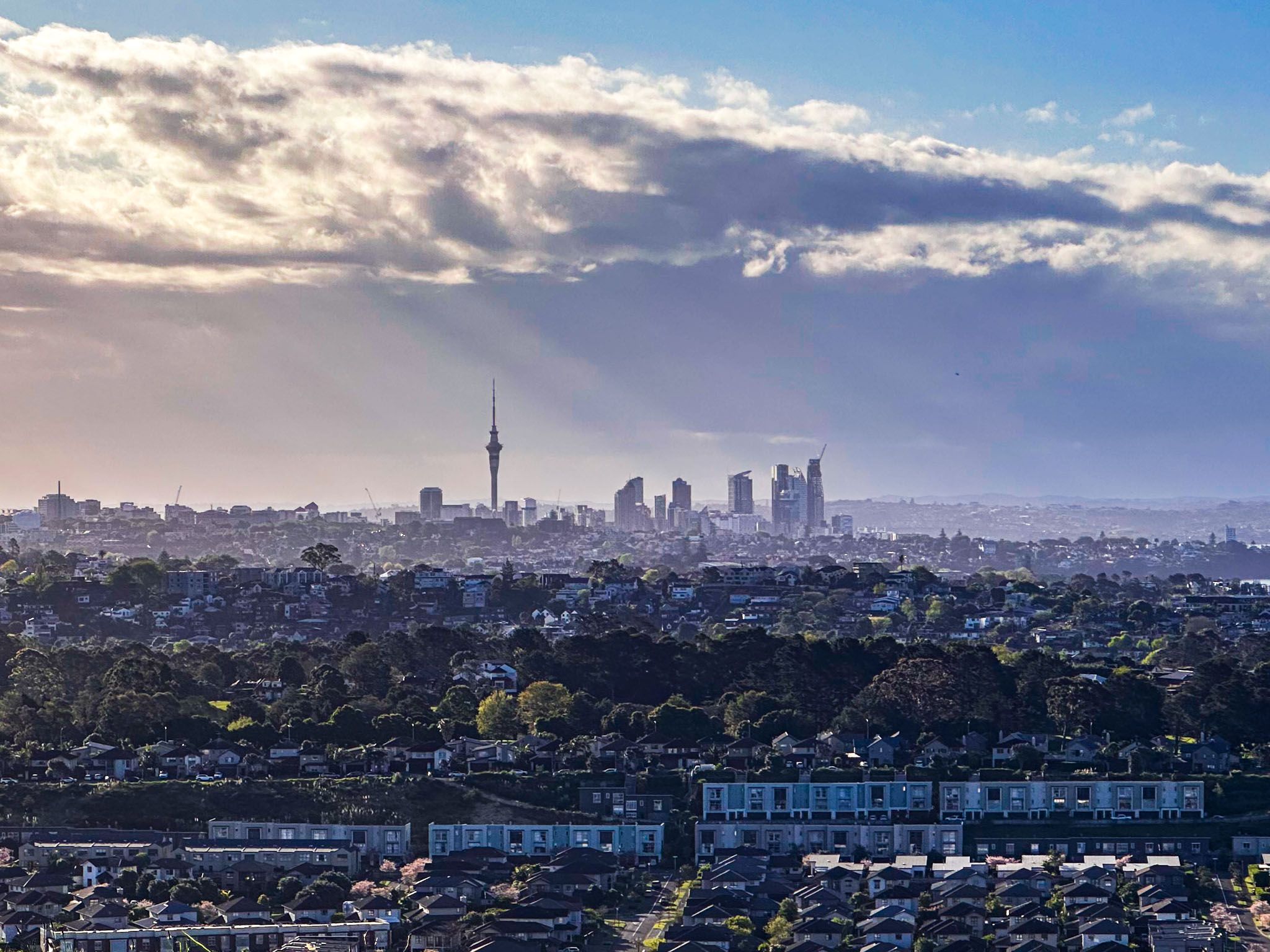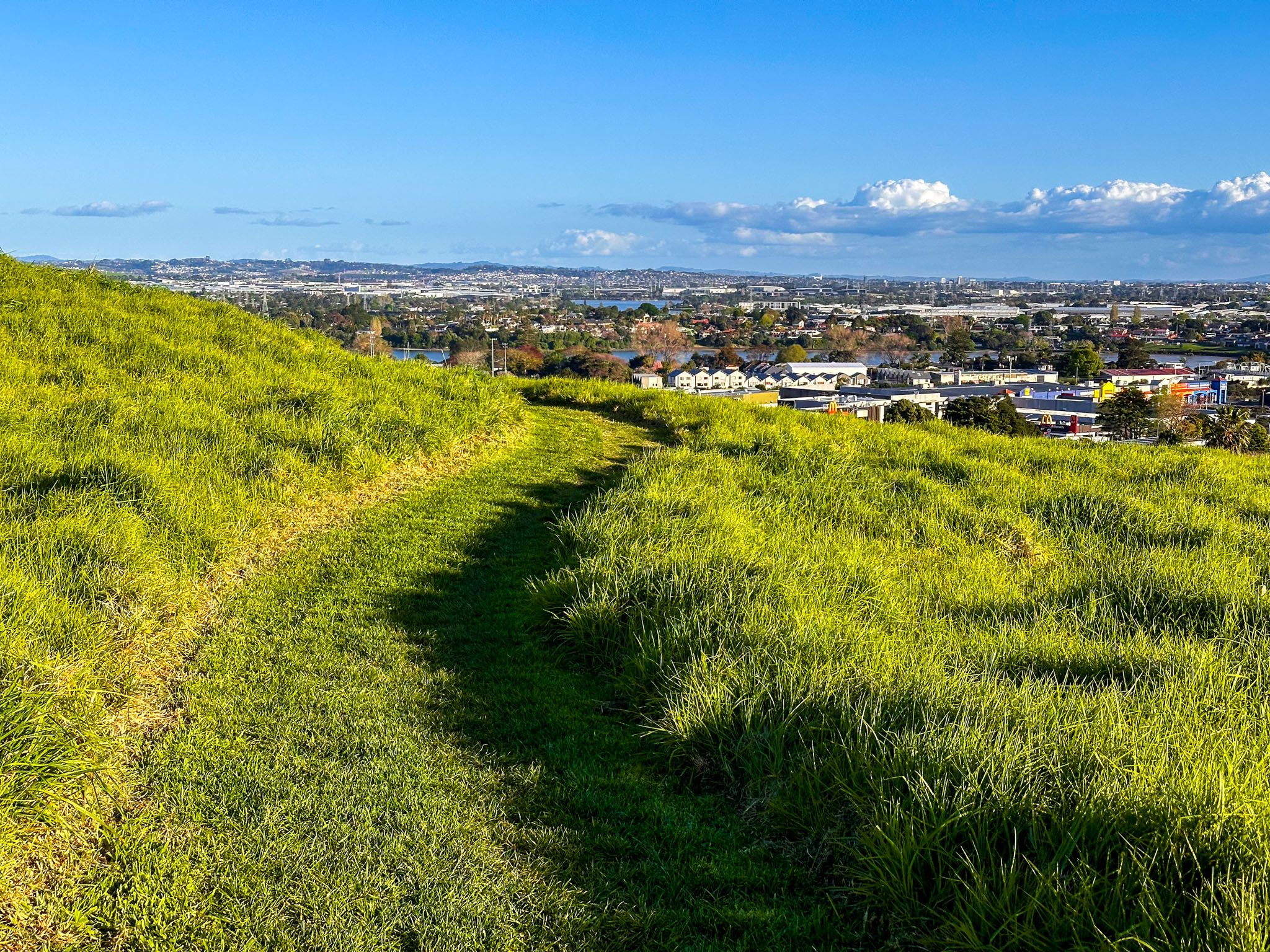Maungarei / Mount Wellington is a 135-metre volcanic peak in the Mount Wellington suburb of Auckland, on the Tāmaki Isthmus and one of 53 cones and craters that make up the 200,000-year-old volcanic field. A walk up Maungarei gives you a very different perspective on Auckland City, when compared to more popular Maungawhau / Mt Eden, and Maungakiekie / One Tree Hill. The view takes in the isthmus, which is more industrial than the views closer to the central city. To the east is the Tāmaki Estuary, to the south Panmure Basin, north is the Waitematā Harbour and Rangitoto, and Downtown is to the west.
It is the youngest of the onshore volcanoes, dating back 10,000 years. The maunga’s scoria cone is the largest in the Auckland field, with a near-circular base, a relatively flat rim, and three small but deep craters. The eruption created several lava flows, including one that extended six kilometres to the Manukau Harbour at Southdown. Another intersected earlier flow formed by eruptions from Mangakiekie and Rarotonga / Mount Smart around Penrose.
The name Maungarei is short for Te Maungarei ā Pōtaka, a historic rangatira of Ngāi Tai ki Tāmaki and Te Waiōhua iwi. The name is also interpreted as "the watchful mountain" or "the mountain of Reipae," referring to a Tainui story that connects the Tainui iwi and Ngāpui iwi. Two sisters, Reitū and Reipae, were enticed by sorcery to travel to Northland, but it ended happily as they both married Ngāpui rangatira. In Reipae’s case, she met and married Korowharo in Kaipara. Subsequently, Whangārei, which means Harbour of Rei, was named for her. The European name was provided by surveyor Felton Mathew, after the Duke of Wellington.
Historically, Maungarei was a pā. It was occupied by Māori from at least 1400 onward, and the still evident man-made terraces and pits appeared from the mid-1500s to the late 1600s. As with other pā on maunga, the natural defensive advantages of height and 360-degree views were enhanced with fortifications. The pā was well positioned for kaimoana, being close to Panmure Basin and the Tāmaki River and Estuary. Rock walls were used around the base of the maunga to divide kūmara gardens on the flats.
After Auckland was established, much of the old lava flow around the mountain was quarried for stone aggregates. Some swamps and Lake Waiatarua, which the lava flows had created by blocking streams, were drained and turned into reserves. The quarry on the north side, where Stonefields is now, once produced 7% of New Zealand's roading material. Quarrying on the south face continued until 1967, after which pine trees were planted to cover it up. The maunga today is almost entirely covered in grass.
In 1963, a 45,100-cubic-meter reservoir was constructed in one of he craters. At the time, it was the largest of its kind and is still the fourth largest in Auckland. It supplies water to the nearby suburbs of Glen Innes, Saint Johns, Saint Heliers, Kohimarama, and Glendowie.
Ownership of Maungarei and the 13 other Tūpuna Maunga were vested in Ngā Mana Whenua o Tāmaki Makaurau in 2014, as part of the Treaty of Waitangi settlement. The settlement agreement provided that the land be held in trust for the benefit of both Ngā Mana Whenua and the wider Auckland community. The Tūpuna Maunga Authority co-manages the Tūpuna Maunga in partnership with the Auckland Council.
The maunga can be accessed from Ellerslie Panmure Highway on Mountain Road on the southeast end and via Harding and Gollan Road at the southwest end. If you are coming by public transport, take a train or bus to Panmure Station, then it’s a short walk north to Mountain Road from the platform.
The path from either end follows the old road up the maunga (now closed to vehicles). It takes about 10 minutes from either direction to get to the north side of the maunga, and is noticeably steeper from Mountain Road. From the north side, there is a gravel path with some steps that loops around the crater rim, which is quite expansive. The tihi (peak) at 135 metres is on the south side. Completing the whole and returning to the start takes around an hour.
You can also access the 4km Stonefields Path from Gollan Road to extend your walk.
